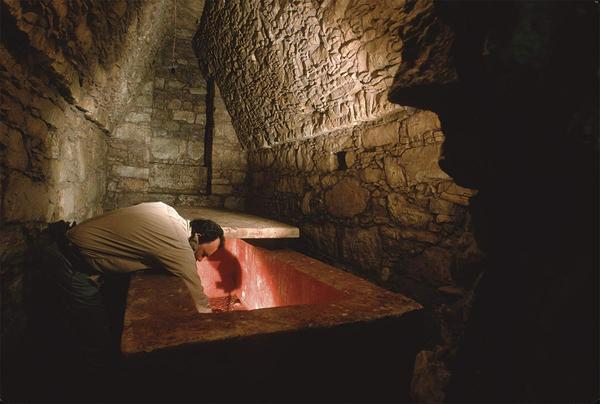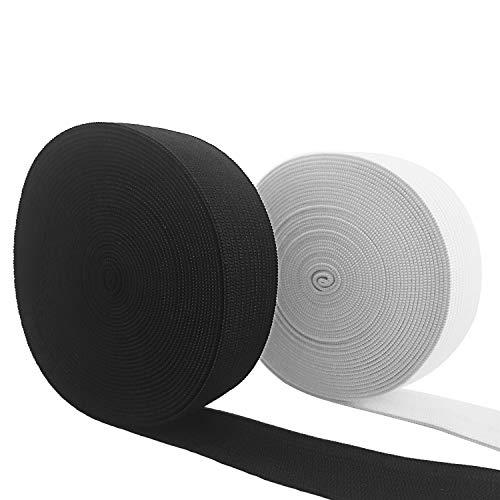The mysterious tomb of the Red Queen of Palenque
Palenque is one of the most beautiful and impressive cities in the Mayan area. Called Lakamha' by the ancient Mayans, it was built in the forested tropical jungle of the Usumacinta River basin, in the Mexican state of Chiapas. During the 7th century, the city experienced a moment of great splendor under the long reign of K'inich Janaab' Pakal I. It was then that numerous palaces, temples and administrative buildings were erected, including the Temple of the Inscriptions, which housed the monumental sarcophagus of the monarch.
In 1994, the director of the Palenque archaeological project, Arnoldo González Cruz, decided to excavate Temple XIII, located next to the Temple of the Inscriptions, in order to study the foundations or possible substructures hidden under this building. To enter it, a tunnel was dug that started from the stairway of the main façade and went into the very heart of the temple. Immediately, the team came across a corridor that gave access to three cameras. Of these, the largest, the central one, was sealed with a wall, at the base of which remains of smoke from some ritual practiced by the ancient Maya could be seen.
The archaeologists realized that this room, purposely sealed, protected something important. Determined to proceed carefully so as not to damage the decoration or objects that may have been deposited there, they drilled a small hole through which they could peer into that space without problem.
To learn more
How much do you know about the Maya?
Read article
A Secret Chamber
Like Howard Carter seventy years earlier in the tomb of Tutankhamun, Arnoldo González inserted a flashlight through the crack and peered into the chamber mortuary. In the semi-darkness a small, vaulted room could be distinguished, measuring 4.20 x 2.50 meters, almost completely occupied by a monolithic tomb made of limestone, with various ceramic objects scattered around the room. After removing the stones that formed the rough enclosing wall, the archaeologists entered the chamber. There they found two bodies, one located on the east side and the other on the west.
The body on the east side corresponded to a young woman who was lying face down, in an extended position and with her hands tied behind her back and who presented cuts and blows to her ribcage, undoubtedly wounds inflicted when extracting her heart; the one on the west side was that of a child, also in an extended position and with a strong blow to the back of the neck that had caused his death. Undoubtedly, both had been sacrificed to accompany the high-ranking figure deposited in the sarcophagus on his journey.

This one had been carved from a single block of limestone and was covered by a heavy flagstone. In its day it was painted red, but humidity and water leaks had spoiled part of its polychromy. On the lid were found the remains of a censer, undoubtedly used in the burial ritual, which covered a circular opening: the psychoduct, a channel that allowed the soul of the deceased to escape from his body and travel to the underworld. It was the custom of the ancient Maya to venerate their ancestors through grave-opening ceremonies. They were offered copal (incense), vessels and food; a way to perpetuate and venerate the memory of the ancestor, something that some indigenous communities still practice.
Red Everywhere
Through the psychoduct, the archaeologists inserted a light and a small camera that allowed them to see inside the sarcophagus. Thus they distinguished some human remains covered with cinnabar of a bright red color.
The problem posed to the archaeologists was how to access the interior of the sarcophagus without damaging the lid, since the distance between it and the walls did not allow it to be moved. For this, they designed and manufactured a device made of wood and metal that made it possible to raise the roof using hydraulic jacks. As Arnoldo González later recalled, once the structure was assembled they realized that they did not have jacks and they had to use those of their own vehicles to proceed to raise the lid. It was five in the morning on June 1, 1994.
To learn more
New studies are carried out on the Red Queen
Read article
As the tomb was opened, the team members began relentlessly firing their camera flashes. When the flashes ceased, the archaeologists' eyes needed a few moments to adjust to the dimness and to be able to glimpse the interior of the sarcophagus, which glowed red: the walls and the bottom, the skeletal remains... everything was impregnated with the toxic cinnabar powder. . In the middle you could see the rich decorations that accompanied the one that would soon be baptized as the Red Queen.
Who was the queen?
Recent studies of the skeletal remains carried out by anthropologist Vera Tiesler along with other researchers show that it was a woman between 60 and 70 years of age and a meter and a half high. The richness of her trousseau, the monumentality of her tomb, the cranial deformation –a frequent trait in members of the Mayan nobility– and the little deterioration of her teeth –reflecting a healthy and elaborate diet– indicate that this woman belonged to the Palenque elite.
She was a contemporary of the great K'nich Janaab' Pakal I and their tombs are very similar, except that the Red Queen's is uninscribed. Both characters had been buried in two adjoining temples that occupy a prominent place in the city and in monolithic sarcophagi, something unusual in Mayan burials. The funerary ritual – with its bodies intensely impregnated with cinnabar and the presence of sacrificial victims – seems to have been prepared and executed by the priests themselves.
Vera Tiesler explored several avenues to identify the body. She reconstructed the face and compared it with portraits of queens from Palenque that appear in some reliefs. Through DNA he verified that there was no relationship between Pakal and the lady with the red bones. Studies of the teeth, carried out by the physical anthropologist Andrea Cucina, revealed that they came from a nearby population. All these conclusions point to Ix Tz'akbu Ajaw, originally from the nearby city of Tokhtan or Ox te'kúb, who came to Palenque to marry Pakal I in the year 626, perhaps with the purpose of reinforcing the political alliances between both kingdoms. . Two of his sons were also kings of Palenque. The comparison of the Red Queen's DNA with that of those who would be her children would constitute the definitive proof of this identification, but the tombs of these sovereigns have not yet been discovered.







![47 best antiage nutritive cream in 2022 [based on 326 reviews] 47 best antiage nutritive cream in 2022 [based on 326 reviews]](https://website-google-hk.oss-cn-hongkong.aliyuncs.com/drawing/article_results_6/2022/2/27/1918fc37c66ad30564173e69d9df88a0.jpeg)
